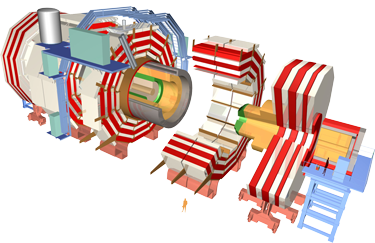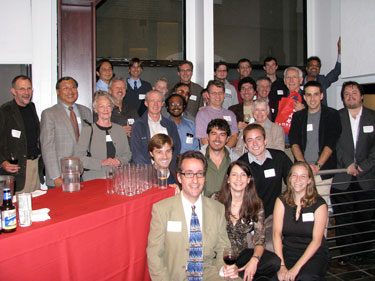



The UC Davis group joined the CMS experiment at the CERN LHC in 1992, originally contributing to the design, construction installation, and commissioning of the Forward Pixels (FPIX) and Endcap Muon (EMU) detectors. In fact, pixels were first proposed for CMS by UC Davis. Over the years, the group has provided leadership in muon simulation, geometry, and reconstruction, along with design of the FPIX installation apparatus. In 2008 we installed the FPIX at the heart of CMS!
The advent of high-energy collisions at the LHC opened up an entirely new regime for exploration. The Higgs discovery in 2012, the long-sought keystone of the Standard Model, was a fantastic achievement. With the increase in energy for 2015 and beyond, the opportunities for new particle discoveries have never been greater, and our group is leading preparations for a wide array of new physics searches.
Our group has broken new ground in searches for non-SM Higgs bosons decaying to taus, heavy SM Higgs decaying to ZZ, and NMSSM Higgs decaying to light pseudoscalars. We have developed a new algorithm for studying boosted top and vector bosons which will aid in the search for new heavy resonances and a number of other new physics scenarios. We are involved in searches for new physics with photons.
The UC Davis group serves the operational needs of CMS in numerous ways, contributing to data quality monitoring, providing beam spot measurements and monitoring, and providing the infrastructure for and performing the task of forward pixel installation. We also work to improve the trigger and muon systems for Run 2, and measure tracking and vertexing performance of the pixels as well as muon data quality. UC Davis contributes to future upgrades to the tracker, developing the low-mass high-speed interconnects between silicon strip layers and other crucial mechanical and electronic structures for the High-Luminosity LHC.